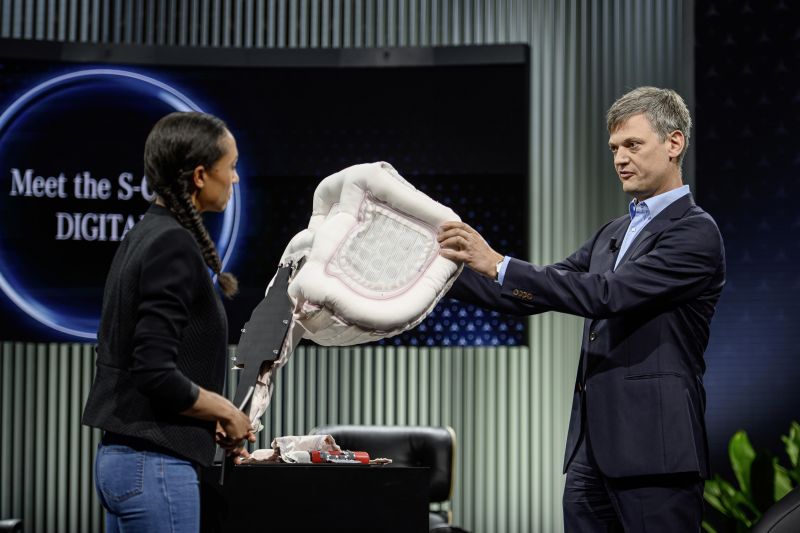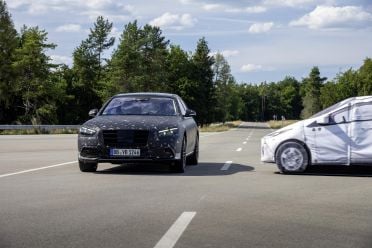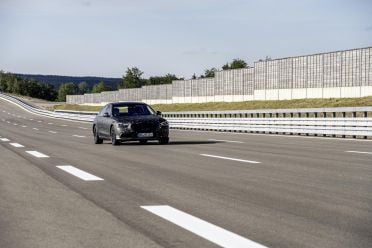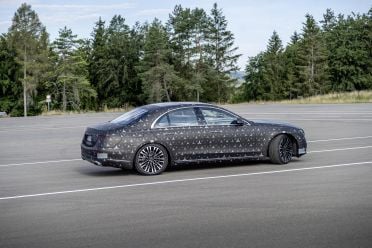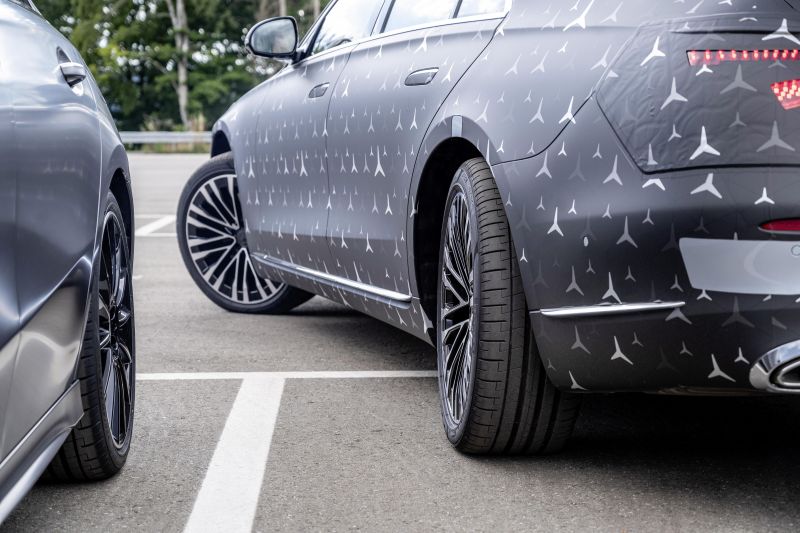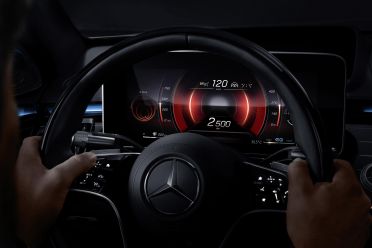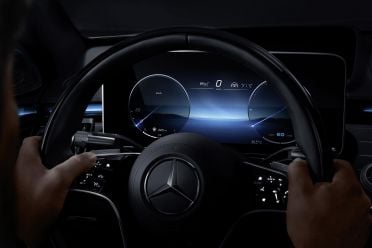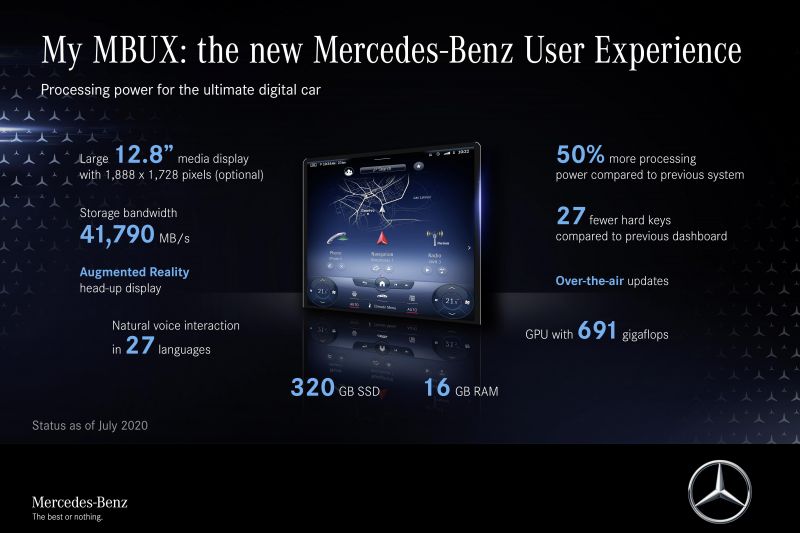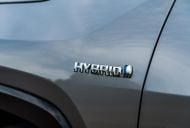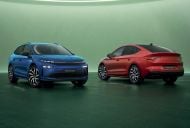Mercedes-Benz is getting ready to reveal the next generation of safety technology that will eventually trickle down its range.
The new S-Class will be fully unveiled later this year, but Mercedes has today lifted the lid on some of the active and passive safety systems its flagship will feature.
The innovations start in the back, where Mercedes-Benz will debut its new rear-seat occupant airbag. Shaped like a baseball catcher’s mitt, the rear unit isn’t as “aggressive” as a traditional front airbag making it safe for children, the elderly, and even car seats.
Mercedes-Benz says the outside of the airbag – the tubular structure pictured above – inflates with compressed gas and will give way to obstacles rather than exploding through them. Only the frame of the airbag is actively inflated, while the cushion in the middle is filled with air sucked in through a series of valves.
It can be turned off, but there’s no rear-seat occupant detection when it’s active. In other words, it’ll fire whether there’s someone sitting back there or not.
A new central airbag will also feature, deploying between the front seats to stop the front passengers bashing heads or clashing flailing limbs in a severe side impact. The same technology is being offered in the new Honda Jazz, Mazda BT-50, and Isuzu D-Max.
Also on hand in a severe side collision is the latest iteration of Mercedes-Benz’s Pre-Safe system, which can detect an impending crash using side-facing radar units and raise the car’s body by up to 80mm just before impact.
With the body sitting higher, the door sill can absorb more of the force from the accident instead of the door itself, lessening the amount the passenger cell is likely to deform.
Driving the active Pre-Safe side-impact system is the latest generation of Mercedes-Benz E-Active Body Control. The current system is able to actively tilt the car’s body (check it out on the GLE450) with active anti-roll bars, driven by the 48V electrical system.
The new S-Class adds “semi-supporting hydropneumatics” to the active air suspension. While the air suspension is still on hand to bear the car’s weight and cushion from impacts, the hydropneumatic system actively supports the car at each corner.
A central control unit manages all four corners of the car, pumping hydraulic fluid around the system to better support whichever wheel needs it most.
A stereo camera is used to scan the road ahead, actively preparing the car for what’s to come. It’ll lean into corners, just like the current GLE.
The system sounds similar (in theory) to the hydraulically-linked suspension setup McLaren debuted on the MP4-12C, which can actively send more support to an individual wheel when its about to drop into a pothole, or relax one corner when it hits a large bump.
Finally, the new S-Class will feature two rear-wheel steering options, the most advanced of which can turn the rear wheels by up to 10 degrees at low speeds. Mercedes says the turning circle of the S-Class with the system fitted will be less than 11 metres, putting it on a par with the current A-Class.
The full 10 degrees of rear-wheel angle will only be deployed in the opposite direction to the front wheels at low speeds – although the back wheels will turn in unison with the fronts for more stable handling at high speeds, they won’t do so quite as sharply.
If you’re not into parking yourself, the active parking assistant has been upgraded to feature 12 ultrasonic sensors and a simpler interface through the MBUX touchscreen. It’s capable of parking between white lines, not just in a gap between two vehicles, and the graphics in the car can more accurately place hazards.
Mercedes-Benz has already laid out how it will adapt the MBUX system for life in its latest flagship.
The MBUX interface and the “Hey Mercedes” voice assistant are available for all occupants, with the S-Class offering up to three screens in the rear with the same features as the screen up front, including comfort and navigation controls.
The instrument cluster display promises a real three-dimensional effect without requiring dorky glasses.
It uses a conventional LCD display with a special pixel structure and a controllable LCD aperture grille, as well as a stereo camera system that precisely determines your eye position. Four different styles are available for the display.
Naturally, the S-Class uses the Hey Mercedes voice assistant which can recognise indirect requests and is capable of learning. If you say “I’m tired”, it’ll activate the Energising Comfort Control and adjust the cabin fragrance, lighting, music and seat as part of the comfort program.
The upcoming S-Class also offers additional safety features in addition to these convenience items. An exit warning feature warns you if a vehicle is approaching and in your car’s blind spot, the ambient lighting flashing red.
The MBUX Interior Assist advises whether a child seat in the front passenger seat is correctly attached, while Attention Assist warns you if it detects signs of micro sleep while you’re driving.
Other highlights include the ability to scan a QR code with the Mercedes App to connect the vehicle to your Mercedes Me account, plus ambient lighting which can be set remotely.
In addition to a PIN, the car can also verify the driver via a combination of fingerprint, face and voice recognition.





